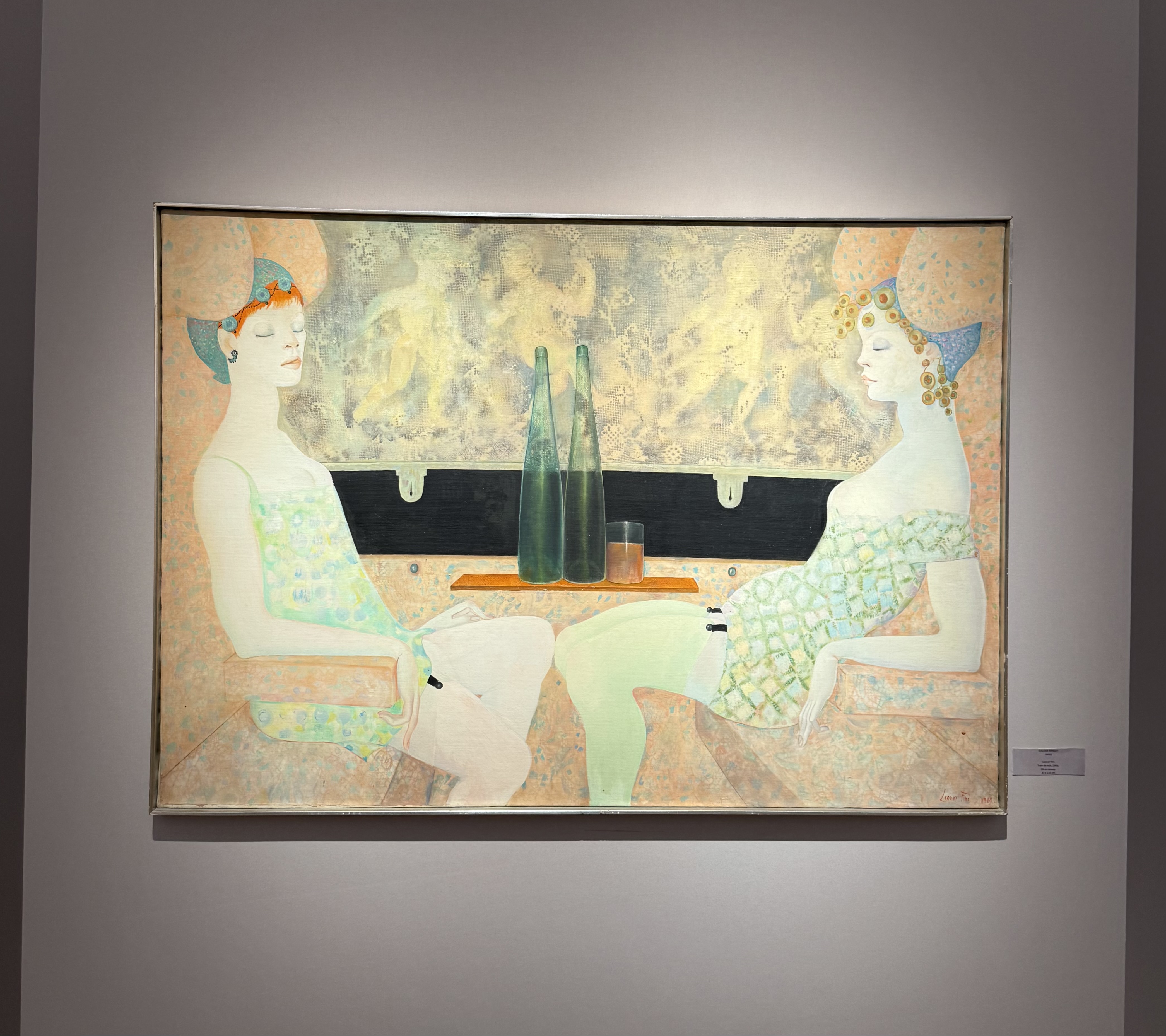A market in motion: The rise of female artists
In 2021, when Yayoi Kusama, a post-war Japanese artist, brought her Infinity Rooms and Chandelier of Grief to Tate Modern, the exhibition was almost perpetually sold out and remained on view for nearly three years. It is no surprise, then, that Kusama leads the global market for women artists, selling over 800 works between 2018 and May 2025, with total sales exceeding $657 million, the highest figure recorded for any woman artist during this period.
Between 2018 and 2024, the number of women artists represented at major auctions more than doubled, from 495 to 1,148. That’s a 131.9% increase, compared with just 22.9% growth for men. In 2018, women accounted for 14.4% of the total auction artist population; by 2024, that share had climbed to 23.6%, marking the highest level of representation on record.
While men still dominate numerically, the data signals a clear rebalancing. Women’s auction visibility is rising faster than at any point in history, a shift propelled by changing collector behaviour, institutional advocacy, and a broader recalibration of market values that deserves a closer look.
A market in motion
According to the Sotheby’s Insight Report 2025, the total sales value of artworks by women nearly doubled from $523.7 million in 2018 to $675.6 million in 2024, increasing their share of global art market value from 6.2% to 13.8%. While male artist sales declined over the same period, women artists recorded an average annual growth rate of 4.3%, with resale returns averaging 13.1% between 2021 and 2025, almost twice that of their male peers.
This is not merely statistical progress, it’s structural. Contemporary and young contemporary women now account for 82% of all women artists at auction, with representation soaring by 103% and 290% respectively. Among artists under 40, women reached 44.6% representation by mid-2025, suggesting that parity could be within reach if current trends continue.
These figures confirm what many collectors already sense: the centre of gravity in the art market is shifting, and women are at the forefront of its momentum.
Beyond the auction room
Yet progress at auction only tells part of the story. The UBS Art Market Report 2025 reveals that, across galleries worldwide, 41% of artists represented in 2024 were women, an increase from 35% in 2018. Primary-market galleries have led this growth, achieving a record 46% female representation.
However, among galleries with annual turnover above $10 million, women accounted for just one-third of represented artists and only 30% of total sales. By contrast, smaller galleries earning under $250,000 are approaching parity, with 49% female representation and 38% of total sales. Commercial success also remains highly concentrated. Among the top 200 artists by total sales, only 10% are women, responsible for just 9% of global sales value. Within the Post-War and Contemporary sectors, three artists - Kusama, Joan Mitchell, and Leonora Carrington, generated nearly 60% of total female sales. Eight major galleries represent 30 of the Top 50 women artists, controlling almost 80% of total auction value since 2018.
This concentration highlights the paradox of progress: visibility for a select few coexists with barriers that limit wider access. Yet the correlation between inclusion and performance is clear. Over the past three years, galleries with programmes comprising more than 50% women consistently outperformed those with less, reporting +4% sales growth in 2024, while male-dominated galleries saw a 4% decline. Diversity, it seems, is not only equitable, it’s good business.

Leonor Fini, Train de nuit (1969), Gallerie Minsky Paris. Photo: © Rhea Mathur, taken at Frieze Masters 2025.
New age collectors and changing priorities
The shift extends beyond artists and galleries to those making the purchases. UBS data shows that high-net-worth collectors allocated 44% of their 2024 art spending to women artists, up from 33% in 2018. Among top spenders, those investing over $10 million annually, the share reached 52%, while mid-tier collectors ($1–10 million) are nearing parity.
This reallocation of capital reflects a generational change in values. Today’s collectors, especially women and younger buyers, are not merely investing in art, they are investing in representation. Their choices signal a growing desire to align collecting with cultural impact, equity, and authenticity rather than speculation.
A striking example comes from British collector Christian Levett, whose experience epitomises this awakening. After sponsoring an Abstract Expressionism exhibition in 2017, Levett realised almost every artist on display was a man. The revelation transformed his collecting philosophy. In 2024, he relaunched his private museum in Mougins as Femmes Artistes du Musée de Mougins (FAMM), Europe’s first major institution dedicated solely to women artists.His pivot mirrors a broader cultural reckoning: a recognition that women have always been at the centre of art history, even if too often written out of it.
What's next?
The data and the stories tell one unified narrative: women are no longer peripheral to the art market, they are redefining it. From auction houses to galleries, from collectors to institutions, the rebalancing is well underway. If this momentum continues, the next decade could mark the arrival of genuine parity in representation and value.
Yet, progress depends on sustained commitment. It depends on larger galleries betting on young, contemporary women artists, not at the expense of the few big names, but alongside them, allowing them to build catalogues that reflect a holistic representation of today’s world on the canvas.
To celebrate this transformation, Artscapy's Director of Client Development, Daniela Bianco, has curated our upcoming exhibition,Women in the Picture, inspired by Catherine McCormack’s pivotal book of the same name. This exhibition will be hosted in London and stands both as a reflection of how far we’ve come and a declaration of intent for what’s next - visit our events page to learn more about how to attend the exhibition.
The market is evolving, collectors are leading, and institutions are beginning to follow.









